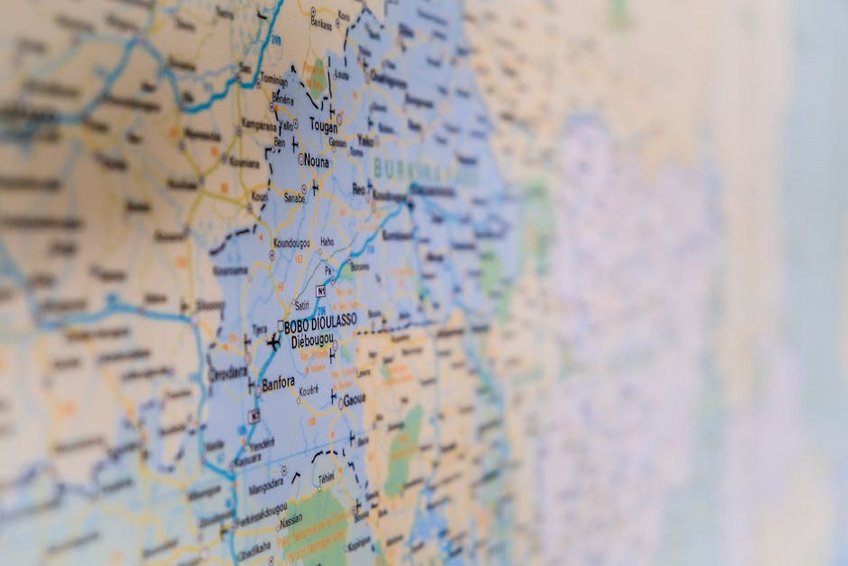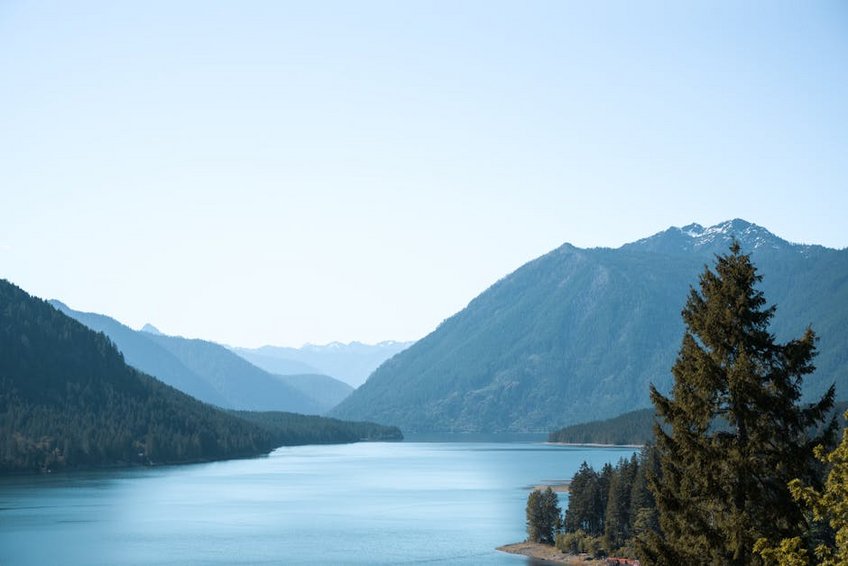Burkina Faso Banfora Cascades: West Africa’s Stunning Waterfall Destination
The Burkina Faso Banfora Cascades represent one of West Africa’s most breathtaking natural wonders, featuring a series of picturesque waterfalls surrounded by lush tropical vegetation. These cascades offer travelers a unique opportunity to explore serene swimming spots, dramatic rock formations, and authentic local villages within Burkina Faso’s southwestern region. This comprehensive guide covers everything from seasonal visiting strategies to cultural immersion experiences for your waterfall adventure.
Essential Banfora Region Information
The Banfora Cascades, locally known as Cascades de Banfora, form part of the Karfiguéla waterfall system in Burkina Faso’s Comoé Province. This natural attraction spans approximately 1.5 kilometers with multiple waterfall tiers ranging from 5 to 15 meters in height. The region maintains a tropical savanna climate with distinct wet and dry seasons influencing water flow and accessibility.
Local communities around the cascades belong primarily to the Sénoufo and Karaboro ethnic groups, maintaining traditional agricultural practices and cultural traditions. The waterfalls hold spiritual significance for some local populations, with certain areas considered sacred spaces. Tourism infrastructure remains developing, offering authentic experiences but requiring careful planning for international visitors.
Key Facts and Features
Understanding these fundamental aspects will enhance your visit to this remarkable destination.
- The cascades feature multiple waterfall tiers with natural pools perfect for swimming during drier months, surrounded by dense vegetation that provides shade and habitat for local bird species.
- Banfora town serves as the primary gateway with basic accommodations, restaurants serving local cuisine, and tour operators offering guided visits to the waterfalls and surrounding attractions.
- Entry fees typically range from $2-5 USD per person with additional costs for guided tours, photography permits, and vehicle access to different sections of the waterfall system.
- Budget travelers can manage on $25-40 USD daily using shared taxis, simple guesthouses, and local eateries while still enjoying guided waterfall visits and regional attractions like the Dômes de Fabedougou.
- Mid-range visitors should budget $50-80 USD daily for private rooms with air conditioning, better restaurant meals, private transportation between sites, and comprehensive guided tours including the cascades and Sindou Peaks.
- Luxury options approach $100-150 USD daily featuring the region’s best hotels, private guided experiences, charter transportation, and specialized activities like photography workshops or cultural immersion programs.
- Burkina Faso National Tourism Office
- Lonely Planet Burkina Faso Travel Guide
Geography and Climate Patterns
The Banfora region sits within Burkina Faso’s southwestern corner near the Ivory Coast border, characterized by lateritic rock formations and fertile plains. Elevation ranges from 300 to 450 meters above sea level, creating the topographic conditions necessary for the waterfall formations. The area receives significantly more rainfall than northern Burkina Faso, supporting the lush vegetation surrounding the cascades.
Temperatures remain consistently warm throughout the year, averaging 77-95°F (25-35°C) with highest readings occurring just before the rainy season. Humidity levels vary dramatically between seasons, from very dry conditions in winter to extremely humid during summer months. The harmattan winds from the Sahara can create hazy conditions between December and February, potentially affecting visibility but rarely disrupting travel plans.
Historical and Cultural Context
The Banfora region has been inhabited for centuries by agricultural communities who developed sophisticated farming techniques adapted to the seasonal climate. European explorers first documented the cascades in the late 19th century during colonial expeditions through West Africa. The area gained protected status in the 20th century as Burkina Faso recognized its tourism potential and ecological significance.
Local communities maintain strong connections to the land through traditional ceremonies, storytelling, and craft traditions like pottery and textile weaving. Visitors should approach cultural sites with respect, following local guidance about photography and behavior near sacred spaces. The region’s history reflects broader West African patterns of migration, trade, and cultural exchange across centuries.

Alt: “banfora-cascades-waterfalls-tropical-vegetation-burkina-faso”
Burkina Faso Banfora Cascades – Planning Your Trip
Organizing your Burkina Faso Banfora Cascades adventure requires careful consideration of seasonal patterns, logistical arrangements, and personal preferences. The dry season between November and March offers optimal conditions with reduced mosquito activity and clearer pathways. You should allocate 3-4 full days to properly experience the waterfalls and surrounding attractions without feeling rushed.
Budget approximately $40-70 USD daily for mid-range travel covering accommodations, meals, local transportation, and guided activities. This estimate excludes international flights and travel insurance, which represent significant additional costs. Advance booking remains advisable during peak season from December through February when European travelers frequently visit to escape winter climates.
Physical preparation should include stamina for walking on uneven terrain and basic swimming ability if planning to enter the waterfall pools. The region’s developing tourism infrastructure means limited medical facilities, making comprehensive travel insurance essential. Mobile network coverage remains inconsistent outside Banfora town, necessitating offline maps and communication plans.
Best Time to Visit Banfora Cascades
Visit between November and February for ideal waterfall conditions with comfortable temperatures ranging from 68-86°F (20-30°C) and minimal rainfall. These months provide the perfect balance between substantial water flow and accessible trails, with December and January being particularly popular. Morning visits before 10 AM help avoid peak heat while maximizing photography opportunities with softer light.
The shoulder months of October and March offer fewer crowds with slightly higher temperatures of 73-91°F (23-33°C) and occasional brief rainfall. July through September features the heaviest rainfall, creating spectacular waterfall displays but challenging access to some areas. Water volume peaks in August, though slippery trails and high humidity may deter some visitors.
Budget Planning and Costs
Your Burkina Faso travel budget should account for these primary expense categories.
Essential Preparation Checklist
Pack quick-dry clothing, sturdy hiking shoes with grip, swimwear, and a waterproof bag for electronics near the waterfalls. Include high-SPF sunscreen, insect repellent with DEET, a wide-brimmed hat, and reusable water bottles to stay hydrated throughout your explorations. Photography equipment should include polarizing filters to manage water reflection and protective cases against humidity and dust.
Required documentation includes a valid passport with at least six months validity and a Burkina Faso visa obtained in advance from embassies for most Western passport holders. Comprehensive travel insurance covering medical evacuation remains crucial given limited healthcare facilities. Book accommodations 2-3 months ahead for December-February visits and consult recent travel advisories before finalizing plans.
Top Attractions and Activities
The Banfora region offers diverse experiences beyond the famous waterfalls, including unique geological formations, traditional villages, and agricultural landscapes. The cascades themselves provide opportunities for swimming, photography, and simple relaxation in a stunning natural setting. Combining multiple attractions creates a richer understanding of southwestern Burkina Faso’s cultural and environmental diversity.
Local guides significantly enhance your experience by providing cultural context, identifying optimal photography spots, and ensuring safe navigation of sometimes challenging terrain. The tourism economy directly supports community development, making guided tours both practical and ethically beneficial. Most attractions remain accessible via the same entry ticket purchased for the cascades, maximizing value for visitors.
Must-See Highlights
The Karfiguéla Waterfalls form the centerpiece of any Banfora visit, with multiple tiers creating natural pools perfect for cooling off during warmer hours. Early morning visits provide the best photography conditions with softer light and fewer visitors, while late afternoons offer dramatic shadows and potentially spectacular sunset views. Entry costs approximately $3 USD with small additional fees for guided explanations of the area’s geology and ecology.
The Dômes de Fabedougou feature extraordinary rock formations shaped by erosion into dome-like structures, located approximately 15 kilometers from Banfora town. These geological wonders create a surreal landscape ideal for photography, with the best lighting occurring during golden hour before sunset. Combine this visit with the nearby marble quarries to understand the region’s mineral wealth and traditional extraction methods.
The Sindou Peaks present dramatic sandstone formations rising abruptly from the plains, offering hiking opportunities through narrow passages and panoramic viewpoints. Local guides can lead you through the most photogenic routes while sharing legends associated with specific rock formations. Visit during cooler morning hours for the most comfortable hiking conditions and clearest visibility.
Hidden Gems and Local Favorites
The Tengrela Lake provides a serene contrast to the energetic waterfalls, featuring traditional pirogue boats and potential hippopotamus sightings during early morning or late afternoon. Local fishermen offer guided boat tours sharing knowledge about the lake’s ecosystem and pointing out bird species rarely seen elsewhere. The surrounding villages maintain traditional construction methods using local materials, offering authentic cultural insights.
Local sugar cane plantations demonstrate traditional agricultural practices, with opportunities to observe harvesting and processing methods depending on seasonal timing. Some farms offer tastings of fresh cane juice and explanations of the crop’s economic importance to the region. These visits support direct community economic benefits while providing unique perspectives on rural Burkinabé life.
The sacred caves near Niansogoni village hold cultural significance for local communities, with guided visits available through respectful tour operators. These sites require particular sensitivity to local customs and photography restrictions, but offer profound cultural understanding when approached appropriately. Combining this visit with the cascades creates a well-rounded experience of both natural and cultural attractions.
Hiking and Exploration Opportunities
Multiple hiking trails connect the various waterfall viewing points, ranging from easy walks to more challenging routes requiring scrambling over rocks. The most popular circuit takes 2-3 hours at a leisurely pace, allowing time for photography and swimming breaks along the way. Early morning starts help avoid the midday heat while providing optimal lighting conditions for landscape photography.
Longer hiking options connect the cascades with surrounding attractions, though these generally require local guides for navigation and cultural mediation. The terrain varies from well-maintained paths to more adventurous routes involving river crossings and elevation changes. Proper footwear remains essential regardless of chosen route, with waterproof options recommended during and immediately after the rainy season.
Practical Travel Information
Burkina Faso’s tourism infrastructure continues developing, with Banfora offering better services than many regional destinations but still requiring realistic expectations. Transportation options include shared taxis, rental cars with drivers, and organized tours departing from Banfora town. Accommodation ranges from basic guesthouses to comfortable hotels, though luxury options remain limited outside Ouagadougou.
French serves as the official language with limited English spoken outside major hotels and tour operators in Banfora. Learning basic French phrases significantly enhances your ability to interact with local communities and navigate transportation. The West African CFA franc (XOF) represents the local currency, with cash remaining essential for most transactions outside established hotels.
| Category | Options/Features | Price Range (USD) |
|---|---|---|
| Accommodation | Basic guesthouses to mid-range hotels with AC, pool, restaurant | $15-80 nightly |
| Local Transportation | Shared taxis, rental cars with drivers, motorcycle taxis | $5-40 daily |
| Guided Tours | Half-day cascades visits to multi-day regional packages | $20-100 per person |
| Meals | Street food to restaurant dining featuring local and French cuisine | $3-15 per meal |


